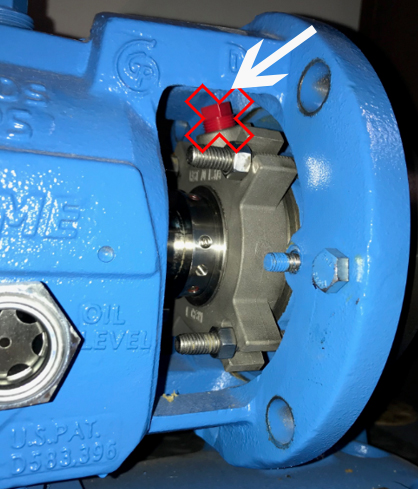Why Use a Flush Port?
It may seem like common sense, however, many users simply plug the port
- Most applications (ANSI pumps), a line from discharge to seal flush provides circulation to cool seal and flush solids away from the seal.
- For dirty applications, use a clean liquid flush from an outside source. This should be combined with a throat bushing in the bottom of the seal chamber to restrict flow. The flow rate of about 1 gallon per minute for each inch of shaft diameter is usually adequate.
- For vertical turbine pumps, a line from the seal flush to the suction pit vents air from the seal and provides cooling flow.
- Pumps with a taper bore seal chamber have good circulation and cooling, and the seal can be used with the flush port plugged.


 Use a Flush Port
Use a Flush Port
Provides circulation at seal rings helping to maintain proper lubrication, temperature, and solids management:
- Eliminates debris buildup at seal faces (prevents clogging).
- Lubricates or cools the seal faces for more efficient performance and for longer life expectancy
The clean flush may come from several sources:
- Clean water.
- A compatible fluid.
- A solvent.
- One of the ingredients in the product.
- An additive that is going to be put into the product down stream and can be added at the pump stuffing box instead.
Note: Seal designs that have springs out of the fluid typically require only 1 gallon per inch of shaft diameter per minute.
Please contact Priest Electric if you have any questions or concerns regarding the use of a flush port.

